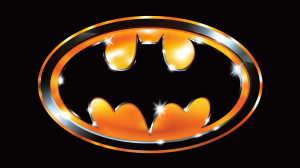It’s hard to believe but Wednesday, May 27 marked the first “normal” New Comic Book Day in two months. Across the United States, local comic book shops have begun reopening, Diamond Comic Distributors resumed deliveries and DC Comics returned last week, and now Marvel Comics are back in shops as well. The number of new titles available are fewer than they were before the pandemic and the physical act of shopping looks a bit different, too — many shops are requiring masks, the use of hand sanitizer, and social distancing measures in store for customer and staff safety — but things definitely feel like a turning point. It’s that turning point presents an opportunity to begin to look to the future and consider how the comics direct market may need to change in order for local comic book stores to not only survive but thrive.
Videos by ComicBook.com
As we’ve explored in earlier installments of this series, even before the coronavirus pandemic comic book shops were dealing with a number of significant challenges thanks to a far from perfect direct market system. Shops we spoke with indicated that many of their issues stemmed from delivery issues with Diamond Comic Distributors — essentially the only company they could work with to get new inventory of comic book titles — as well as a lack of returnability. As you may recall, retailers more or less have to gamble when ordering titles as if a new title doesn’t sell well, they are unable to return it. It’s a situation that is exacerbated by the ordering times for titles as books are ordered up to two months in advance with Diamond so if a title or an arc looks cool in previews, but doesn’t do particularly well once it arrives, stores are stuck with that stock due to non-returnability.
These issues were compounded by the coronavirus pandemic. While publishers did offer some relief through expanded returnability, Diamond’s shutdown on March 23 effectively left shops with no new product, something especially challenging when one considers that not only were many shops attempting to remain “open” with non-traditional methods of servicing customers (such as curbside pickup, delivery, and mail order) there were shops who were not required to close their doors to the public at all and remained open as usual. A lack of new product meant a reduction in sales for everyone, even on top of the reduction of sales due to the general uncertainty of the pandemic.
It’s those to issues that need to be addressed as the direct market moves forward from the pandemic. While short term it will be a challenge for shops to gauge customer demand making the continuation of returnability terms critical — both Image Comics and DC Comics previously announced that comics would be returnable for shops during the pandemic — returnability is something that must be addressed over the long term as well. Simply put, the old method of doing business has already been a burden on retailers for years and with things even more fragile now, it’s the right time to fix the issue by implementing a returnability strategy.
“Returnability is a huge thing all store owners have been wanting,” Patrick Zambrano owner of Z’s Comic Lair in Nashville, TN told us. “We want to order product and we don’t like selling out of product two hours into new comic Wednesday, but we can’t risk being stuck with product, so we order lighter on issues and can’t grow the industry like it needs.”
Joshua Hunter of Crush Comics in Castro Valley, CA said something similar, noting that judging demand going forward will be complicated at best as a solid reason for returnability.
“Diamond should offer extended payment terms and returnability,” Hunter said. “Gauging demand will be much harder post COVID, as we don’t know what each of our customer’s financially will look like.”
Outside of returnability, the pandemic shutdown brought to light one of the major weaknesses of the current direct market model. To put it somewhat bluntly, in 1997 the Department of Justice did not declare Diamond to not be a monopoly. What they did was determine that there was no need for legal action against Diamond at that time. It’s a major and important distinction to make especially since Diamond does actually function as a monopoly when it comes to the comic book direct market. In fact, that’s something that the DOJ actually directly found noting that Diamond “enjoyed a monopoly in North American comic book Direct Market distribution.”
If the company that holds the monopoly is unwilling or unable to function, it puts everyone reliant upon them in an economic stranglehold. We’ve now seen that in action thanks to the pandemic, but that doesn’t mean something else in the future couldn’t derail things as well. The way forward from that, then, is for new, additional distribution services to emerge, something we have also seen thanks to the pandemic. Back on April 17, DC announced that they would resume selling new comics on April 28 with the help of two distributors that were not Diamond: Lunar Distribution and UCS Comic Distributors. It’s a date almost a full month before Diamond resumed. While it’s unclear if Lunar and UCS will continue or if they were truly a stop-gap measure, the fact that these options presented themselves in short order are sort of a proof of concept.
It is possible for there to be more than Diamond and having some actual competition is good for the industry. If there were other options beyond Diamond for shops to get new books and product, it would force more competitive, retailer-friendly terms. That’s what competition in any market does: it creates an environment where companies have to have some measure of accountability lest the customer take their business elsewhere. As it currently stands, retailers haven’t had anywhere to turn, even though Diamond isn’t always particularly reliable. Nearly every shop we spoke to made some mention of issues with Diamond, including one notable example of a shop never receiving a single on-time, intact order in all the shop’s years of operation. If Diamond had competitors, that shop could simply take their business elsewhere.
Competitors to Diamond would also potentially provide an opportunity for smaller publishers to get their works out to the larger direct market in a way that doesn’t really happen now as Diamond has fairly high sales minimums for order — meaning that if a comic doesn’t reach a specific advance minimum in sales, Diamond just won’t distribute it, something that can be crippling for small presses, self-publishers, and even some retailers. Competitive distributors may have different sales minimums, meaning the door could be open for those smaller publishers to get their product into shops and into reader’s hands in a much bigger way.
Ultimately, the path forward from here for comic book shops and the direct market is going to be a long one. The future remains uncertain on so many fronts. The challenges of COVID-19 will take time to overcome and may have left lasting changes in their wake. As the industry moves forward, changes need to be made specifically in terms of returnability and distribution not only to help support the recovery of comic book shops, but to position the entire direct market so that it can not only weather what storms are yet to come but to help make it the best possible version of itself for years to come.
Photo: Jeremy Hogan / Echoes Wire/Barcroft Media via Getty Images








